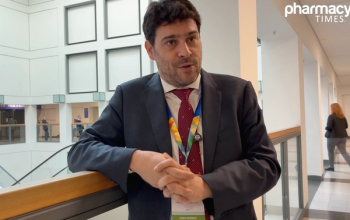
New Tool May Improve Prediction of IVIG Resistance in Children With Kawasaki Disease
New system may more accurately identify IVIG resistance in North American patients with Kawasaki disease than the Kobayashi score.
Researchers are developing a new tool that could allow health care providers to better predict resistance to intravenous immunoglobulin (IVIG) therapy in children with Kawasaki disease. The tool, under development by scientists at the University at Buffalo, may lead to North America’s first test that predicts resistance to treatments for Kawasaki disease, a rare but severe inflammatory condition, according to a study published in the Journal of Pediatric Pharmacology and Therapeutics.
Kawasaki disease has the highest incidence rate in Japan. Currently, the most widely used tool in Japan for predicting resistance to IVIG in patients with Kawasaki disease is the Kobayashi score, according to the study.
The Kobayashi score can predict resistance to IVIG with a sensitivity rate of 86% in Japanese patients. However, because of Japan’s homogenous population, the Kobayashi score has limited use outside of the country, according to the investigators. They noted that the Kobayashi score has a sensitivity rate of 33% for the various patient demographics in North America.
The authors said that the new tool was twice as accurate predicting sensitivity among children in Western New York, producing a detection rate of 54%.
“Neither system is highly sensitive, but the new score may more accurately identify IVIG resistance in Western New York children and other North American populations than the Kobayashi score,” study first author Jasdip Singh, PharmD, global scientific communications manager at Eli Lilly and Company, said in a press release.
Kawasaki disease, which involves acute inflammation of blood vessels, primarily affects children under 5 years of age and is the leading cause of acquired heart disease among US children, according to the study. Untreated Kawasaki disease can lead to life-threatening coronary artery aneurysms.
The standard treatment for the disease is IVIG and aspirin. Most cases of Kawasaki disease are resolved following a single dose of IVIG. However, up to 20% of children are resistant to IVIG, which subsequently increases their risk of developing coronary artery aneurysms, according to the study.
The investigators evaluated 208 cases of children hospitalized with Kawasaki disease at a Buffalo hospital between 2000 and 2015 and divided patients into IVIG susceptible or IVIG resistant cohorts. They identified 4 differing variables between the cohorts—white blood cell count, neutrophil percentage, age, and serum albumin concentration—which were used to create a new prediction score.
The researchers assigned 1 point for each variable, with a score of 3 or higher indicating a high risk of IVIG resistance. The accuracy of the new tool was evaluated on Kawasaki disease patient data from patients in Western New York, Boston, and China to ensure the system is applicable across geographic locations.
The tool’s sensitivity rate was 54% among the Western New York data set compared with 26% for the Kobayashi score in this dataset. Notably, the sensitivity rate for the new tool was of 40% in the Boston dataset compared with a 0% rate for the Kobayashi score. The new tool’s sensitivity rate was lowest in the China dataset at 27%, compared with 36% for the Kobayashi score.
The investigators said that future studies are needed to determine whether the new score is applicable in areas outside of Western New York in the United States. They added that identifying additional variables should improve the tool’s accuracy.
“Our study, although small, highlights the challenges with predicting IVIG resistance. These findings underscore the regional variations that exist with Kawasaki disease and the limitations with applying a risk prediction tool to a population outside of the one it was derived from,” corresponding author Nicholas Fusco, PharmD, clinical associate professor of pharmacy practice in the University of Buffalo School of Pharmacy and Pharmaceutical Sciences, said in a press release. “The new score resulted in improved sensitivity, but many children with true resistance may be missed.”
Reference
Jasdip Singh, Arthur Chang, Nicholas M. Fusco, Mark Hicar; Predicting Intravenous Immunoglobulin Resistance Among North American Children Hospitalized With Kawasaki Disease. The Journal of Pediatric Pharmacology and Therapeutics 1 September 2022; 27 (7): 669–676. doi:
Newsletter
Stay informed on drug updates, treatment guidelines, and pharmacy practice trends—subscribe to Pharmacy Times for weekly clinical insights.























































































































































































































